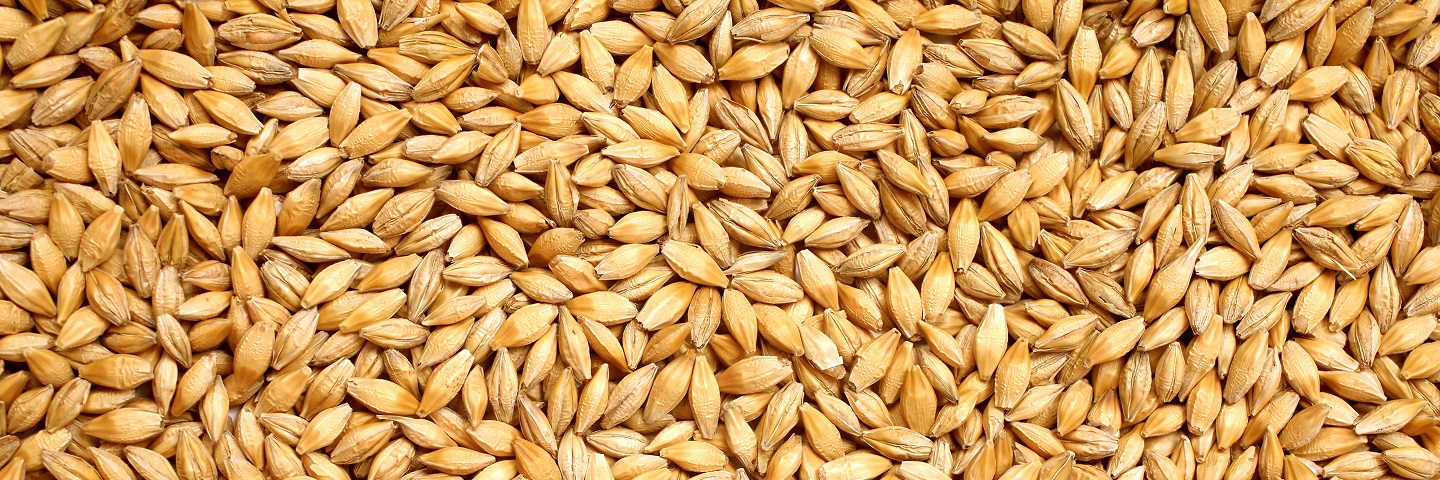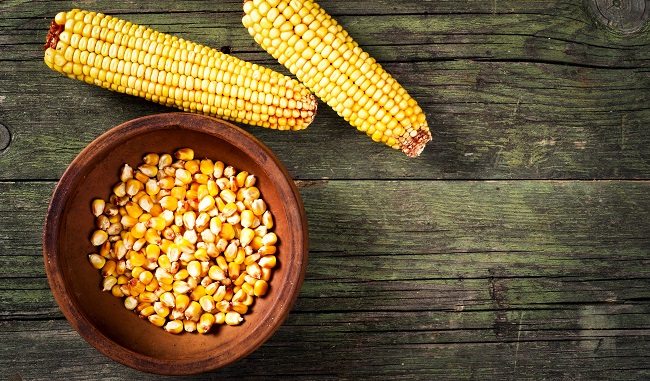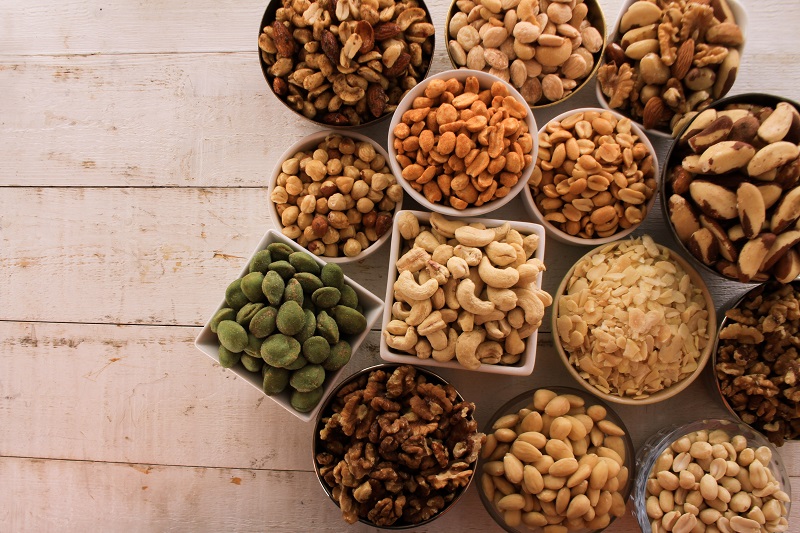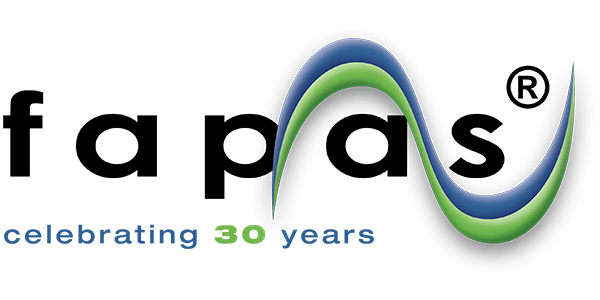
Visit our other sites
-
Fapas - Proficiency Testing
Globally recognised provider of proficiency tests, running over 400 tests annually across an extensive range of matrices and analytes
-
Great Crested Newts Testing
A single sample taken by an ecologist at any time during the newt breeding season can determine their presence or absence, saving you time and money
Fera is the UK National Reference Laboratory for Mycotoxins and Plant Toxins in Food and Feed. Fera has extensive knowledge in the analysis of mycotoxins in food, feed and food crops.

Mycotoxins
Mycotoxins are secondary metabolites produced by some moulds. They can occur in a wide range of foods, often with no visible signs of mould spoilage to the food. They have a wide range of chemical properties and toxicities to humans and food-producing animals. Exposure to some mycotoxins is controlled through legislation.
The European Food Safety Authority (EFSA) have evaluated a wide range of mycotoxins, including ochratoxin A, ergot alkaloids, deoxynivalenol, zearalenone and T-2 and HT-2 toxins. More detailed information can be found here.
Fera has carried out many research projects and surveillance exercises for the UK Food Standards Agency, Food Standards Scotland, EFSA and commercial customers. The toxins studied include trichothecenes, ochratoxin A, aflatoxins, sterigmatocystin and ergot alkaloids.


Legislation
Assimilated Regulation (EC) No 1881/2006 (https://www.legislation.gov.uk/eur/2006/1881/contents) sets maximum levels for certain contaminants in foodstuffs and assimilated Regulation (EC) No 401/2006 (https://www.legislation.gov.uk/eur/2006/401/contents ) prescribes the methods to be used for sampling and analysis for enforcement purposes. In the EU maximum limits for certain contaminants in food are set in Commission Regulation (EU) 2023/915. This legislation does not apply in GB as it was introduced after EU Exit.
Assimilated Commission Regulation (EC) No 1881/2006 stipulates maximum levels of certain mycotoxins in foodstuffs. Mycotoxins specifically covered are: aflatoxins (B1, B2, G1 and G2, and M1), ochratoxin A, patulin, deoxynivalenol, zearalenone, fumonisins B1 and B2 and citrinin. In addition, maximum levels are set for ergot sclerotia.
Aflatoxins
Maximum Levels apply for the following foodstuffs:
- Groundnuts (peanuts) and other oilseeds
- Almonds, pistachios and apricot kernels, hazelnuts, Brazil nuts and tree nuts
- Dried fruit and dried figs
- All cereals and all products derived from cereals
- Maize and rice
- Raw milk, heat-treated milk and milk for manufacture of milk based products.
- Spices – Capsicum spp., Piper spp., Myristica fragrans (nutmeg), Zingiber officinale (ginger), and Curcuma longa (turmeric) (including mixtures contain one or more of these).
- Processed cereal-based foods and baby foods for infants and young children
- Infant formulae and follow-on formulae, including infant milk and follow-on milk
- Dietary foods for special medical purposes r y intended specifically for infants
Guidance document for competent authorities for the control of compliance with EU Regulations on aflatoxins is available here: https://food.ec.europa.eu/document/download/17a22129-d928-4a82-874a-1b41bc09a422_en?filename=cs_contaminants_catalogue_alfatoxins_guidance-2010_en.pdf
Ochratoxin A
Assimilated Regulation (EC) No 1881/2006 sets maximum levels for ochratoxin A in certain foods, including unprocessed cereals and cereal products derived from them, dried fruit, some spices, liquorice, wine, grape juice, coffee, infant foods and wheat gluten (not sold directly to the consumer).
The UK Food Standards Agency has published a Code of Practice on Good Storage to reduce Ochratoxin A in cereals here.
Patulin
Maximum levels are set for patulin in fruit juices, spirit drinks and cider, apple products (juice, puree, compote), and baby foods and apple juice and apple products sold for infants and young children.
Information can be found here that gives you details on the prevention and reduction of patulin contamination in apple juice and apple juice ingredients in other beverages.
Fusarium toxins
There are maximum levels for some Fusarium toxins (deoxynivalenol, zearalenone, fumonisins B1 & B2) are set in assimilated Regulation (EC) No 1881/2006.
Deoxynivalenol maximum levels apply to cereals, cereal products, maize and maize products, pasta, bread, bakery wares, pastries, biscuits, cereal snacks and break cereals and baby food.
Zearalenone maximum levels apply for these products and maize oil.
Fumonisin maximum levels apply to maize and maize products, including maize based breakfast cereals, snacks and baby food.
The Food Standards Agency provides advice and recommendations on the prevention and reduction of Fusarium toxins in cereals and cereal products here : https://www.food.gov.uk/business-guidance/mycotoxins#codes-of-practice-fusarium-and-ochratoxin-a.
Plant Toxins
Some plants form toxins as part of their natural defence against insects and diseases. Typically these plants are not normally consumed, however they may appear as weeds in food crops resulting in their leaves or seeds becoming mixed accidentally with the main crop. This can lead to low concentrations of these toxins occurring in some foods such as cereals, herbal based products, teas, and salad crops. Examples of these toxins are tropane alkaloids and pyrrolizidine alkaloids.
Other plant toxins are present naturally in some food plants e.g. erucic acid in some oils, opium alkaloids in poppy seeds or hydrocyanic acid in apricot kernels
Legislation
Maximum levels have established for erucic acid, tropane alkaloids and hydrocyanic acid in https://www.legislation.gov.uk/eur/2006/1881/contents
Hydrocyanic acid in raw apricot kernels
A maximum level of 20 mg/kg has been set for hydrocyanic acid in raw apricot kernels. The Food Standards Agency provides advice on the sale of apricot kernels and bitter almonds here (https://www.food.gov.uk/business-guidance/plant-toxins)
Tropane alkaloids
Maximum levels of atropine and scopolamine are set for cereal-based foods and baby foods for infants and young children, containing millet, sorghum and buckwheat.


Erucic acid
Maximum levels for erucic acid apply for vegetable oil and fats.
Pyrrolizidine alkaloids
There are maximum levels set for pyrrolizidine alkaloids, these do not apply in GB. Advice on good agricultural practice and how to reduce potential contamination from these toxins has been developed by Codex (https://www.fao.org/fao-who-codexalimentarius/sh-proxy/en/?lnk=1&url=https%253A%252F%252Fworkspace.fao.org%252Fsites%252Fcodex%252FStandards%252FCXC%2B74-2014%252FCXC_074e.pdf) and there is additional information available on the Food Standards Agency Plant toxins webpage (https://www.food.gov.uk/business-guidance/plant-toxins)
Food Standards Agency
Information on Mycotoxins for industry and enforcement bodies including sampling advice, special import conditions and Codes of Practice to prevent mycotoxins can be found here.
Information about legislation for plant toxins and guidance on cyanide in apricot kernels and opium alkaloids in poppy seeds can be found here.
The Chemical Safety Contaminants Catalogue gives more information about mycotoxins and plant toxins, can be found here.
For more information on our National Reference Laboratory status for Mycotoxins and Plant Toxins in Food and Feed please contact us here.
Mycotoxins are secondary metabolites produced by some moulds. They can occur in a wide range of foods, often with no visible signs of mould spoilage to the food. They have a wide range of chemical properties and toxicities to humans and food-producing animals. Exposure to some mycotoxins is controlled through European and National Legislation.
The toxins studied include trichothecenes, ochratoxin, aflatoxins and ergot alkaloids. Fera has carried out many research projects and surveillance exercises for the UK Food Standards Agency, The EU and commercial customers. Training courses in mycotoxin analysis are regularly organised and run.

EU-RL Mycotoxins and Plant Toxins
The EU-RL for Mycotoxins and Plant Toxins aims to facilitate the implementation of European legislation related to monitoring of mycotoxins and plant toxins in food of plant origin and animal feed. RIKILT Wageningen University & Research is the EURL for mycotoxins & plant toxins in food and feed, effective from March 1, 2018.
European Legislation
The Contaminants in Food (England) Regulations 2013 make enforcement measures provision for European Commission Regulation (EC) No 1881/2006, setting maximum levels for certain contaminants in foodstuffs and Regulation (EC) No 401/2006 prescribes the methods to be used for sampling and analysis for enforcement purposes. There are similar Regulations for Scotland, Wales and Northern Ireland.
Copies of the EU Regulations, and those of England, Scotland, Northern Ireland and Wales are available from the Food Standards Agency.
Commission Regulation (EC) No 1881/2006 (as amended) stipulates maximum levels of certain mycotoxins in foodstuffs. Mycotoxins specifically covered are: aflatoxins (B1, B2, G1 and G2, and M1), ochratoxin A, patulin, deoxynivalenol, zearalenone, fumonisins B1 and B2 and citrinin. In addition, maximum levels are set for ergot sclerotia.

Relevant Regulations
Aflatoxins
Commission Regulations (EC) No 1881/2006 and Regulation (EC) No 401/2006 and their amendments, set maximum limits and lay down methods for sampling and analysis respectively.
Regulation (EU) No 165/2010 amending Regulation (EC) No 1881/2006 setting maximum levels for certain contaminants in foodstuffs as regards aflatoxins.
Regulation (EU) No 178/2010 amending Regulation (EC) No 401/2006 as regards groundnuts (peanuts), other oilseeds, tree nuts, apricot kernels, liquorice and vegetable oil.
Commission Implementing Regulation (EU) No 884/2014 provides the overarching legislation which allows the introduction of emergency measures for import conditions for certain consignments (including for use as feed) from some third countries due to aflatoxin contamination issues. These Regulations are amended as required to add new products or remove products as situations change.
Regulation (EC) No 669/2009 (and amendments) sets out requirements for increased official controls. Annex I gives the list of products, country of origin; hazards; and frequency of checks to be carried out. Annex I is reviewed at least every six months.
Guidance document for competent authorities for the control of compliance with EU Regulations on aflatoxins is available here:
Ochratoxin A
Regulation (EC) No 1881/2006 (and its amendments) set maximum limits for ochratoxin A in certain foods, including cereals, dried fruit, some spices, liquorice, wine, grape juice, coffee and infant foods. Methods for sampling and analysis for ochratoxin A are laid down in Regulation (EC) No 401/2006 (and its amendment Commission Regulation (EU) No 178/2010).
The UK Food Standards Agency has published a Code of Practice on Good Storage to reduce Ochratoxin A in cereals here.

Patulin
Regulation (EC) No 1881/2006 (and its amendments) set maximum limits for patulin in fruit juices, spirit drinks and cider, apple products (juice, puree, compote), and baby foods and apple juice and apple products sold for infants and young children.
Methods for sampling and analysis for patulin are laid down in Regulation (EC) No 401/2006.
Commission Recommendation (2003/598/EC) on the prevention and reduction of patulin contamination in apple juice and apple juice ingredients in other beverages. Information can be found here that gives you details on the prevention and reduction of patulin contamination in apple juice and apple juice ingredients in other beverages.
Fusarium toxins
Maximum limits for some Fusarium toxins (deoxynivalenol, zearalenone, fumonisins B1 & B2) are laid down in Regulation (EC) No 1881/2006. Limits for T2 & HT2 toxin are not set, but are currently under discussion. Sampling and methods of analysis are laid down in Commission Regulation (EU) No 178/2010 amending Regulation (EC) No 401/2006.
Commission Recommendation 2006/583/EC of 17 August 2006 provides advice and recommendations on the prevention and reduction of Fusarium toxins in cereals and cereal products.
The European Food Safety Authority (EFSA) have evaluated several of the main Fusarium toxins, including deoxynivalenol, zearalenone and T-2 and HT-2 toxins. More detailed information can be found here.

Food Standards Agency
Information on Mycotoxins for industry and enforcement bodies including sampling advice, special import conditions and Codes of Practice to prevent mycotoxins can be found here.
Information about legislation for plant toxins and guidance on cyanide in apricot kernels and opium alkaloids in poppy seeds can be found here.
Directorate-General SANTE – Health and Food Safety
Directorate-General SANTE – Health and Food Safety, this Commission department is responsible for EU policy on food safety and health. The website gives more information on the work of DG SANTE, covering topics such as the RASFF system, animal feed and novel foods.
The Chemical Safety Contaminants Catalogue gives more information about mycotoxins and plant toxins, can be found here.
Learn More
To speak with us about this service, or for any other services, please contact us below, or phone our experts on:
+44 (0)300 100 0323

Copyright © 2025 Fera Science Limited (“Fera”). All rights reserved.
For further information about how Fera uses any personal data collected from you, please see our Privacy Notice at www.fera.co.uk/privacy-policy.


